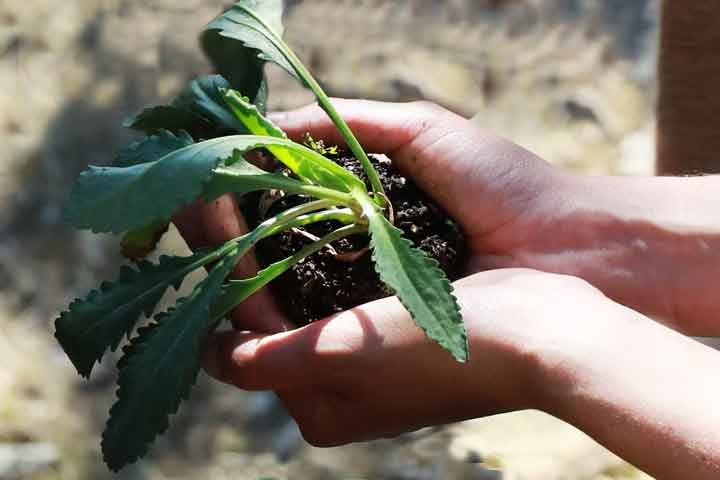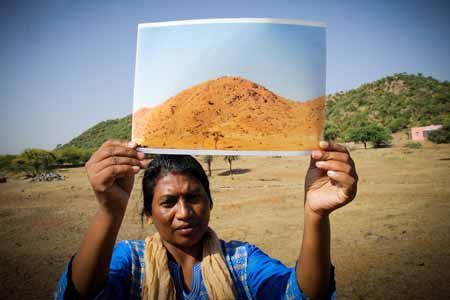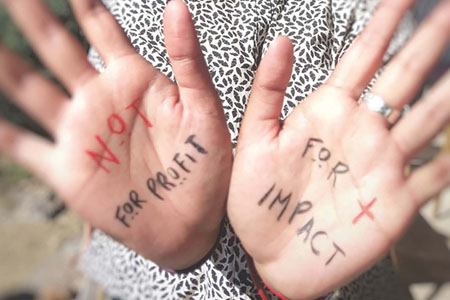
31 Mar Experiencing social entrepreneurship through simulations
Aspire coordinator Priya Rollins explains why the social enterprise programme is founded on a philosophy of learning through doing.
Among educators, the old Chinese proverb, “Tell me, I’ll forget. Show me, I’ll remember. Involve me, I’ll understand” is well known. The idea of a child learning through experience results, not only in knowledge being embedded for a longer period of time, but also results in a greater understanding and ability to apply the learning in real life scenarios.
The process of bringing change and working to disrupt social systems, which are exceedingly complex and fluid, call for a wide range of shifting interventions.
The question more widely debated is how to find the most effective way to ‘involve’ a child in learning. Today, there are many such theories, especially when it comes to learning about social entrepreneurship – a process which focuses on positive social change through creating disruptive and innovative solutions. The complex and unpredictable process of social entrepreneurship varies greatly, depending on the context. This means that the process of balancing skill training within the sterile environment of the classroom with hands-on learning isn’t quite as simple as conducting a science experiment or building a model.
 Entrepreneurship, and especially social entrepreneurship, are saturated with uncertainty from the very start. The process of bringing change and working to disrupt social systems, which are exceedingly complex and fluid, call for a wide range of shifting interventions. These require confidence, creativity, and a willingness to take risks. In order to succeed, multiple experts in the field, such as Ashoka (which hosts the largest network of leading global social entrepreneurs), Skoll Foundation (which connects and supports entrepreneurs globally, pictured), and Forbes magazine (which has the privilege of interviewing some of the top actors in the field), as well as leading social entrepreneurs themselves, identify a set of specific skills and personal characteristics which must be developed. However, do not fret – they go on to state that, while seemingly intimidating and certainly not easy, this quest is not impossible and reaps countless rewards.
Entrepreneurship, and especially social entrepreneurship, are saturated with uncertainty from the very start. The process of bringing change and working to disrupt social systems, which are exceedingly complex and fluid, call for a wide range of shifting interventions. These require confidence, creativity, and a willingness to take risks. In order to succeed, multiple experts in the field, such as Ashoka (which hosts the largest network of leading global social entrepreneurs), Skoll Foundation (which connects and supports entrepreneurs globally, pictured), and Forbes magazine (which has the privilege of interviewing some of the top actors in the field), as well as leading social entrepreneurs themselves, identify a set of specific skills and personal characteristics which must be developed. However, do not fret – they go on to state that, while seemingly intimidating and certainly not easy, this quest is not impossible and reaps countless rewards.
Elements of successful entrepreneurship
Briefly speaking, these skills and characteristics can be boiled down (though not exclusively) to five key points. First and foremost a successful social entrepreneur must embody compassionate empathy, always seeking to understand multiple perspectives and apply this to the way their ideas are formed; “How can you solve a problem until you have experienced it? They must have exceptional investigatory skills and be able to test your assumptions so you don’t make something that no one needs,” says Jaron, LSE student and founder of Artisans and Fox. One of the most widely accepted characteristics of a successful venture is being creative in problem solving and always looking for a new way to solve an old problem.
Additionally, being able to work in a dynamic and fluid team, and “having an unwavering belief in everyone’s innate capacity” (Skoll magazine) is a must- in today’s world, any venture will not succeed unless you are able to build a dynamic team around you. And last, but definitely not least, one must have the tenacity and persistence to carry on regardless of the obstacles and surprises which may appear, being able to change your strategy as often as needed; “rather, ten times, die in the surf, heralding the way to a new world, than stand idly on the shore,” Florence Nightingale.
By immersing the participant in a scenario for hours, to days, to even weeks, participants begin to feel what it is like to face emergencies, speed bumps, and not having text book responses to their actions.
But how does one obtain such skills? Bill Drayton, Founder of Ashoka and the man who coined the term social entrepreneur, states that, “The biggest problem is getting beyond the ‘you can’t’ syndrome… It doesn’t require brilliance. It’s just giving yourself permission and then being persistent. Persistent in seeing the problem or opportunity and persistent in thinking about it until you have come up with some interesting ideas that might change the pattern”. Therefore, when teaching something as nuanced as social entrepreneurship where one learns through the process of ‘persistence in coming up with pattern-changing ideas’ we asked ourselves, how could we create a programme which must exceed the boundaries of the classroom and reach into their very being, giving them the confidence to take the first step?
The answer? Simulation
Simulations place the learner in a position of embodying their learning and directly applying their knowledge, while also giving time for reflection and discussion. These activities have been used as training tools for multiple professions from medical students, to pilots, to teachers and have even appeared within school-aged classrooms to teach lessons such as economics and history. By immersing the participant in a scenario for hours, to days, to even weeks, participants begin to feel what it is like to face emergencies, speed bumps, and not having text book responses to their actions.
and history. By immersing the participant in a scenario for hours, to days, to even weeks, participants begin to feel what it is like to face emergencies, speed bumps, and not having text book responses to their actions.
So, when considering how best to teach social entrepreneurship (a profession bursting with uncertainty and twists), and keeping in mind that students require – more than concrete skills – the possession of strong personal characteristics and resilience, a simulation provides a perfect platform to help accomplish this.
Immersed in these roles, they will experience the range of emotions which comes with social entrepreneurship; from excitement, to confusion, to determination, to frustration, to satisfaction and much, much more.
Simulations have been credited with helping build confidence, linking theory to real life and exposing potential issues in strategies. They go much deeper than case studies or text books and demonstrate first-hand the complexity of our social systems (and therefore solutions). As opposed to hypothetical situations posed in the classroom where feedback is imagined or more controlled; in simulations, for each action, there is a reaction. Feedback is quick and real, allowing for students to learn from the results and move on.
Furthermore, simulations show the individual where they are at, what they have internalized and learned, and where they may need to grow. Through these activities, aspiring social entrepreneurs begin to see how they function in a team with diverse skills and opinions, what kind of leader they are and want to be, and how they react when the situation changes from what they anticipated. They’ll notice how challenging it is to come up with a solution when they weren’t able to raise enough funds, or how to negotiate when a government official suddenly decides the project doesn’t work in his or her best interest. Beyond this, since they will be fully immersed in these roles, they will experience the range of emotions which comes with social entrepreneurship; from excitement, to confusion, to determination, to frustration, to satisfaction and much, much more.
Priya Rollins, Dorm Parent and Aspire coordinator
As we look forward to this summer’s Aspire conference, we are excited about the process of planning this journey for some of Asia’s most curious aspiring social entrepreneurs. Keep an eye out for more exciting titbits and thought pieces for the Centre for Imagination and Aspire’s coming activities.






Séverine Cesalli
Posted at 15:49h, 03 DecemberBeautifull programme ! I just love Florence Nightingale’s quote “rather, ten times, die in the surf, heralding the way to a new world, than stand idly on the shore”. I didn’t know it.
Here is one that would also suit the Centre for imagination : “they did not know it was impossible, so they did it”, from Mark Twain